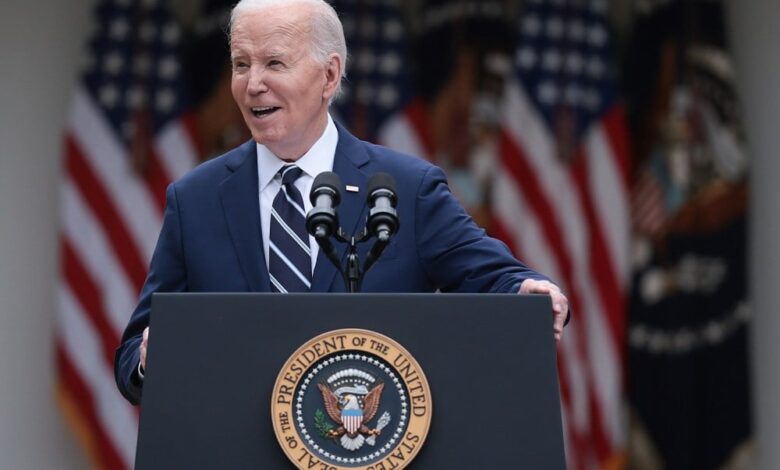Electric Vehicle Tariffs Show America on Backfoot in China Trade

Comparative advantage is dead, it seems. U.S. President Joe Biden has introduced new tariffs on Chinese imports, moving them to 100 percent on electric vehicles, 25 percent on batteries, and 25 percent on critical minerals. Why? Because China didn’t play by the rules, of course!
That argument is really starting to sound like a broken record. Yes, China surely broke trade rules along the way, specifically through state aid that harms the competitiveness of other players and via policies that mandate the transfer of intellectual property. But you don’t impose tariffs of this scale because they only broke trade rules. In fact, the United States has not filed any complaint with the World Trade Organization (WTO), whereas China did do so for the United States’ EV subsidies, which include local content requirements that violate WTO law. No, this move comes as the United States is tremendously outcompeted by China in batteries and EVs—both in terms of cost and quality and, yes, innovation as well.
It is time to acknowledge this reality and understand how we reached this point. We need to move beyond the bathetic portrayal of the United States as a victim and find a way forward that better balances national security with the energy transition. As things stand, these tariffs will end up increasing costs on the final consumer and slow down the energy transition.
How did we arrive at this point? In the 1990s and 2000s, the West moved its economic development pathway to one of servicification, focusing on high-value segments of the supply chain such as research and development, branding, design, and marketing. Consequently, it offshored the lower-value “dirty” manufacturing to other countries, notably to China.
However, the West was arrogant, assuming that China would not advance from manufacturing to areas such as design, R&D, and marketing. But advance it did, through a deliberate and consistent industrial policy.
While the United States and European Union were mired in political squabbles, supporting unsustainable biofuels, or caught in partisan disputes over fuel economy standards, the Chinese government was already prioritizing EVs in 2007 and, by 2011, was intensifying policies to secure critical minerals. For the latter, China spent billions of dollars through the Belt and Road Initiative in the 2010s to secure supply and backed firms to invest in mineral-rich countries.
Meanwhile, as the Chinese government was transitioning from manufacturing to battery innovation, the U.S. government was moving in the opposite direction, largely due to the Solyndra debacle.
Solyndra, a solar panel manufacturer, went bankrupt despite substantial government subsidies, sparking bipartisan political outrage. That outrage was for a large part politically motivated; no risk assessment can be perfect, but innovation always necessitates failure, and accepting it has to be part of funding innovation.
Unfortunately, in the aftermath of Solyndra, the U.S. government chose not to support a then-little-known company named A123. Through various steps, A123’s technology finally ended up in China, where it was developed into today’s LFP battery—a technology requiring significantly fewer critical minerals and now accounting for about 40 percent of the global market.
So, as things stand, China doesn’t just control important supply chains—it often makes better products. Both of these are real issues, and the U.S. government, under both the Trump and Biden administrations, has been justifiably concerned about the national security implications of China’s dominance in the critical mineral and battery supply chain.
Chinese entities process more than 60 percent of essential battery components such as lithium, graphite, cobalt, and nickel and manufacture around 80 percent of cathodes, anodes, and battery cells. The concern would be significant even if a friendly nation like Canada held such supply chain dominance, let alone China.
The United States is actively seeking to diversify these supply chains—a wise move. While its incentives have successfully encouraged the domestic production of battery cells, particularly in gigafactories, they have been less effective in the midstream sectors of battery manufacturing.
To understand these challenges, Columbia University, in partnership with the U.S. Energy Department, has facilitated roundtables with industry leaders and investors. The insights revealed are telling.
China is undeniably the mammoth in the room, boasting not only raw cost and quality competitiveness but also significant overcapacity. This overcapacity grants China considerable pricing power and the ability to consolidate the market—typical monopolistic behaviors that pose challenges for diversification efforts.
However, diversification faces other hurdles as well. Securing financing depends heavily on solid offtake agreements. Potential offtakers, in turn, are hesitant to commit without seeing tangible financial support.
The Energy Department has been working diligently to support these projects, a fact well-appreciated by the supply chain and investors. Yet there remains substantial uncertainty about the future of governmental support and industrial policy, especially with the possibility of Donald Trump’s reelection as president.
The impact of political polarization and the power of lobby groups over the trajectory of the United States are extremely evident. Investors at the roundtables all cited inconsistency and uncertainty as the primary deterrents to investment, together with China’s competitiveness.
Consequently, investors are currently lukewarm on funding North American projects, deterred by the high-risk profiles, elevated interest rates, complex permitting processes, and the volatility of battery commodity prices. According to currently unpublished forward-looking assessments by the International Energy Agency, the outlook through 2040 suggests that China will maintain its stronghold over the supply chain.
There are policy options available to boost competitiveness, and tariffs might be part of the solution, even if they risk advancing a trade war that is fundamentally undermining our planet’s ability to lower global warming faster.
The United States has indeed long criticized China for its export-led growth strategy, particularly in strategic sectors, such as the automobile industry, that employ many people. It’s reasonable for the government to want to protect these sectors, but there’s a crucial distinction between protecting an industry and being competitive within it.
One intervention could be the establishment of price floors for the battery midstream, similar to those used in agriculture. This would significantly alter the financial landscape for the private sector. While potentially costly, such a policy could effectively aid in diversification efforts.
Other policy measures could include adjusting market access and pricing mechanisms to reflect the methods of production. Rectifying a mistake made in the early 1990s by WTO member states, which disregarded the importance of production methods, could lead to setting standards in critical mineral trade agreements.
However, the United States might also benefit from looking inward and possibly even learning from China. China’s ascent was driven by strict mandates and targets—strategies currently unfeasible in the United States due to a politically charged environment where lobby groups can easily overturn sound industrial policy following a change in administration.
That is unfortunate, as such mandates have proved effective; for example, the EU’s target for 25 percent of its critical minerals demand to be met through recycling by 2030 has significantly bolstered the industry.
The United States could also explore public procurement policies, which have been highly effective in China, particularly concerning electric buses. Additionally, significant investment in workforce development is necessary, especially since training for the critical minerals and battery sectors remains a major challenge in the United States.
Washington must urgently recognize that the current situation is unprecedented and that it cannot simply “protect and spend” its way out of this challenge—not only because of the prohibitive costs for both consumers and the government but also because such strategies are less effective against the dynamic advancements of China in the battery sector.
Importantly, the United States must acknowledge that innovation is no longer its core comparative advantage in this sector. The world’s largest battery manufacturer, China’s CATL, employs 18,000 R&D staff after all and currently pushes the boundaries of innovation beyond the reach of U.S. firms.
Rather, what the United States truly needs is a deliberate engagement with international partners for two critical reasons: firstly, to diversify supply chains, and secondly, to address how to dissuade China from leveraging its supply chain dominance for geopolitical objectives that could threaten U.S. and global security.
This approach should include supercharging the Minerals Security Partnership, a U.S.-led coalition of countries that seek to invest more in critical minerals projects across the world to improve security of supply. It should also use the International Development Finance Corp. more to invest directly. Finally, the United States should forge more critical mineral agreements with nations such as Brazil, India, and Indonesia. These agreements should prioritize access for products that demonstrate high social and environmental performance.
This is necessary because in many countries, local fundamentals may outperform the United States in developing competitive capacities in specific mineral and battery components that could rival China. These countries could use the help of the United States to develop that competitive capacity—to Washington’s own advantage in the long run.



